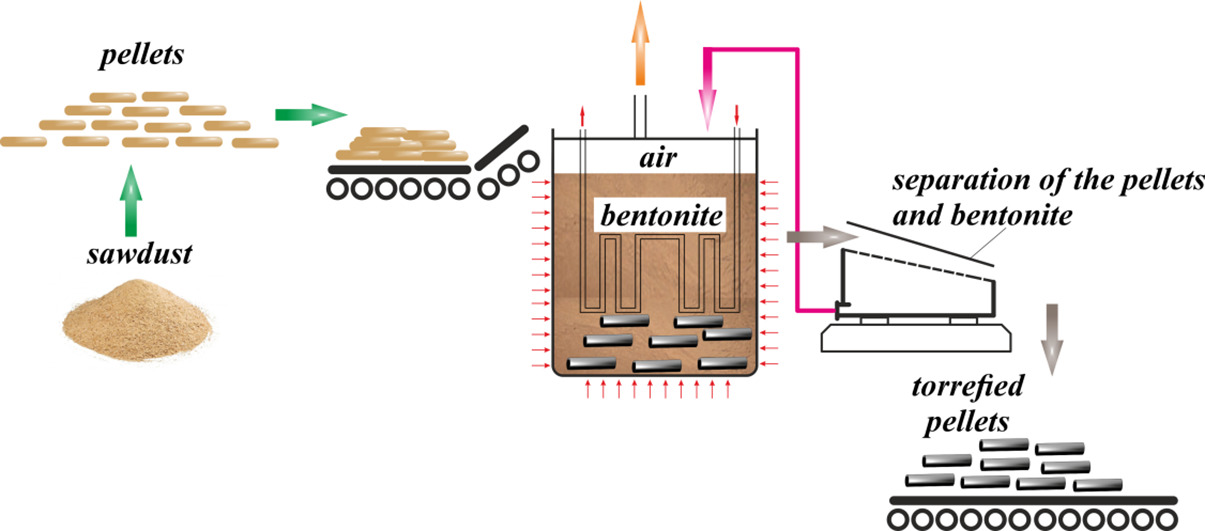Researchers have proposed a new technology to produce biofuel from wood waste
Scientists from the Moscow Institute of physics and technology and the joint Institute of high temperatures of the Russian Academy of Sciences have proposed a new unique technology for biofuels from wood waste, according to the online publication Naked Science. Its implementation does not require the use of a large amount of inert gas, which significantly improves its economic and environmental performance.
The basis of bioenergy-biofuels, raw materials for which are different types of biomass. The term “biomass” means material of plant or animal origin. For example, in the form of raw materials can be used waste forest industry — sawdust. With the help of pressing technology, wood fuel pellets or briquettes are obtained from them, which are used as fuel in boilers and electric generators. However, in the untreated form, the use of biomass is largely problematic because of its relatively low energy density and hydrophobicity. To overcome such problems, the properties of biomass need to be “upgraded” — for example, with the help of torrefication technology.
Torrefication is a heat treatment process, which is usually carried out in a non-oxidizing environment (in the absence or low oxygen content) at temperatures of 200-300 °C. wood biomass consists mainly of three main components: cellulose, lignin and hemicellulose. Destroyed by torrefaction mainly the hemicellulose. Torrefied biomass has improved fuel characteristics. Today, there is or is in the development of a wide variety of different technological methods of torrefication. However, it should be recognized that so far this process of biomass processing has not received wide commercial use in the world. This is largely due to the imperfection of existing technological processes,including environmental problems. Usually, in the process of torrefication, inert gas is used to protect biomass from excessive oxidation, which can lead to a significant loss of biofuel mass. In fact, with an excess of oxygen, part of the fuel simply burns. Since in this method gaseous products are diluted with a large amount of inert gas, this complicates their subsequent disposal.
To overcome the above-mentioned problems, Russian scientists have developed a completely new technology of biomass processing. The essence of the technology is as follows. Wood pellets or briquettes in the reactor are filled with a layer of mineral filler. As such filler can act bentonite clay, talc or chalk. All of these components are chemically resistant and relatively inexpensive. Then the reactor is heated, and the process of torrefication is carried out without the use of inert gas.
Boris Kichatov, one of the authors of the study, doctor of technical Sciences, a leading researcher at the laboratory of physics of active media and MIPT systems and the laboratory of diagnostics of dusty plasma of OIVT RAS, said: “Using this technology, it is possible to obtain biofuels of very high quality, the energy characteristics of which are close to coal. An important advantage of this technology is its environmental friendliness.

In addition, here, along with solid fuel, it is possible to obtain about 10% of very valuable chemical compounds: aldehydes, ketones, alcohols and carboxylic acids. Combining bioenergy and the chemical industry is an important task for Russia in the coming decades.
It should also be noted that in its essence it is a fairly simple technology, and to create production does not require large capital expenditures. This factor is important for small and medium-sized businesses. Installations using this technology can be placed in the immediate area of timber harvesting. When cutting down forests, a large amount of waste is formed-stumps, branches of trees. Today, most often such waste is burned on the spot, and sometimes just thrown away. In the latter case, they are a source for the development of diseases and pests of our forests. On the basis of the technology developed by us, it is possible to create relatively small productions that will solve both energy and environmental problems.”
The advantage of this type of fuel is that its combustion does not lead to additional emissions of carbon dioxide into the atmosphere.
 Timber industry research & analytics
Timber industry research & analytics 